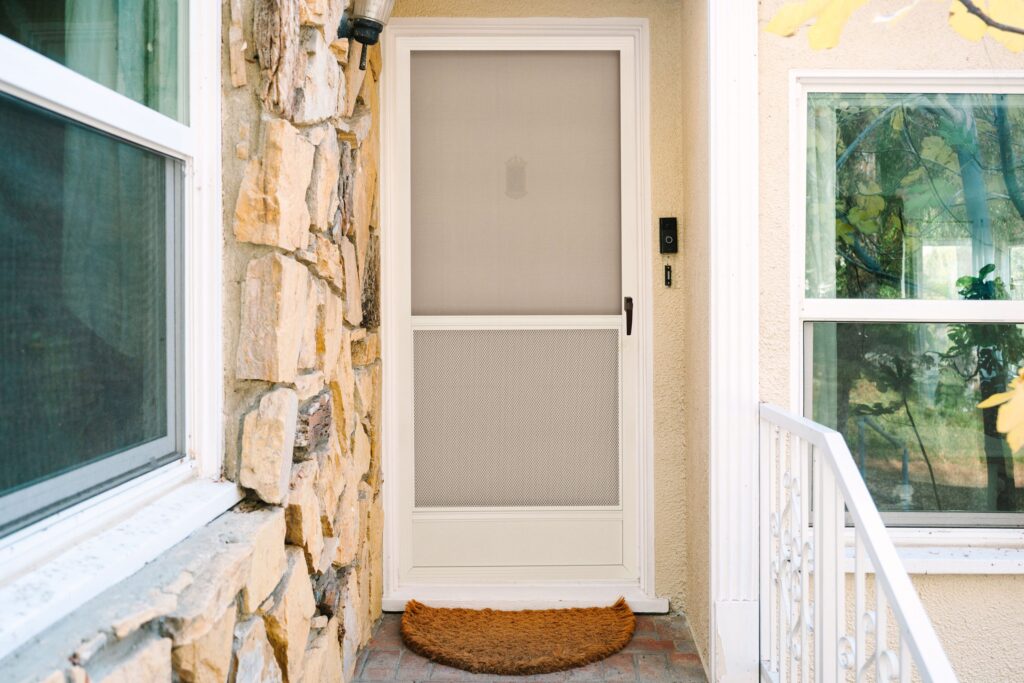Definition of Standard Size
When it comes to purchasing patio screen doors, one of the questions that may come to mind is whether or not there are standard sizes that you should be considering. The short answer is yes – there are standard sizes for patio screen doors, just as there are for other types of doors and windows.
So, what exactly does it mean for a door to be considered “standard size”? Essentially, it means that the door is manufactured to fit a certain set of dimensions that are commonly used in construction and home design. For example, a standard patio screen door may have a width of 36 inches and a height of 80 inches.
Of course, not every patio screen door will fit these exact dimensions – there are often variations in size based on the particular manufacturer and model of the door. However, by sticking to standard sizes as much as possible, you can make the process of finding a replacement screen door much simpler. You’ll have a better chance of finding a door that fits your existing frame, and you may be able to save money by choosing a pre-made door rather than having one custom-built for your space.
It’s important to note that standard sizes may differ depending on the type of patio screen door you’re considering. For example, sliding glass doors and French doors may have different standard sizes than roll-formed or retractable screen doors. Additionally, you’ll need to measure your door frame carefully to ensure that you’re choosing the correct size. This typically involves measuring the largest height and width of the frame opening, taking into account any obstructions or unevenness that may affect the fit of the door.
Overall, choosing a standard size patio screen door can simplify the process of finding a replacement or new door for your outdoor space. Take the time to measure your frame carefully and consider the different options available to ensure that you choose a door that fits your needs and complements your home’s style.
What is a Patio Screen Door?

A patio screen door is a type of door that is designed to provide easy access to your outdoor space while also keeping bugs, debris, and other unwanted elements out of your home. Patio screen doors typically consist of a frame made from materials such as wood or aluminum, with a screen panel that allows for ventilation and clear views of your surroundings.
One of the primary benefits of patio screen doors is that they allow you to enjoy the comfort and convenience of your outdoor space without having to worry about pests or other nuisances. Whether you’re enjoying a summer evening with friends and family or simply relaxing with a good book, a patio screen door can help create a comfortable and inviting atmosphere.
In addition to their practical benefits, patio screen doors can also add aesthetic appeal to your home. With a wide range of colors, frame styles, and screen options available, you’re sure to find a patio screen door that complements your home’s existing design and architecture.
When choosing a patio screen door, it’s important to consider factors such as size, frame material, and screen type. Standard sizes for patio screen doors typically range from 30 to 36 inches in width and 76 to 80 inches in height, although custom options are also available. Frame materials can include wood, aluminum, or vinyl, with each option offering its own unique advantages and disadvantages. When it comes to screen types, options include traditional mesh screens, retractable screens, and even solar-reflective screens that can help keep your home cool and comfortable during the hottest months of the year.
Overall, a patio screen door is a versatile and practical addition to any home. Whether you’re looking to improve your outdoor living space or simply add an extra layer of protection against pests and debris, this type of door is sure to serve your needs for years to come.
Common Sizes of Patio Screen Doors
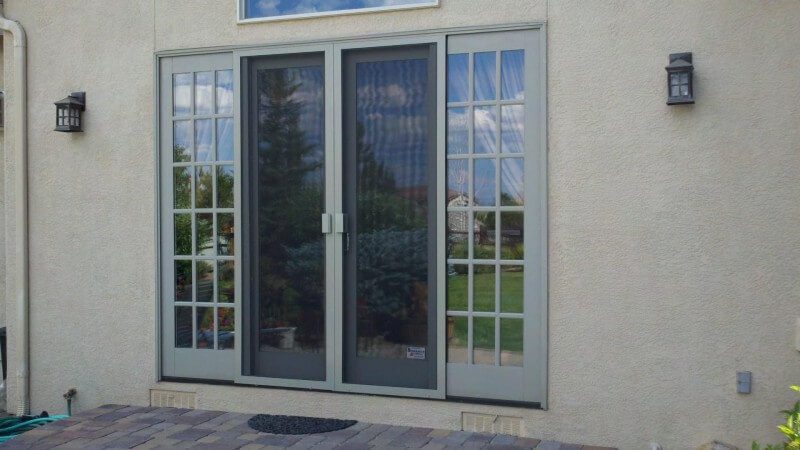
When it comes to patio screen doors, there are a few common sizes that you’ll come across in your search for the perfect fit. These sizes range from 30 inches to 36 inches in width and 76 inches to 80 inches in height. However, keep in mind that custom options are available if these standard sizes don’t work for your specific needs.
To ensure a proper fit, it’s important to measure your door frame accurately. Use a measuring tape to measure the largest width and height of your door frame, and remember to account for any obstructions that may affect the installation. When measuring, it’s always better to err on the side of caution and take slightly larger measurements to ensure that the screen door will fit properly.
In addition to size, you’ll also want to consider the frame material. Most patio screen doors are available in wood, aluminum, or vinyl. Wood frames offer a classic, traditional look but may require more maintenance. Aluminum frames are lightweight and durable but may not provide as much insulation. Vinyl frames are the most affordable option and require minimal maintenance, but may not offer as much strength as wood or aluminum.
When it comes to screen types, traditional mesh screens are the most common option, but retractable screens and solar-reflective screens are also available. Retractable screens are perfect for those who prefer an unobstructed view, as they can be retracted when not in use. Solar-reflective screens are a great option for those who want to keep their home cool and energy-efficient during the summer months.
It’s also important to consider the color and design of your patio screen door. Most screen door companies offer a range of color options to help match your home’s existing design. Some even offer custom designs and patterns to add a unique touch to your outdoor space.
Overall, finding the right size and style of patio screen door for your home requires careful consideration. Take accurate measurements, consider your frame material and screen type options, and don’t be afraid to add some personality with a unique color or design. With the right patio screen door, you’ll be able to enjoy your outdoor space in comfort and style.
36-Inch Standard Screen Doors
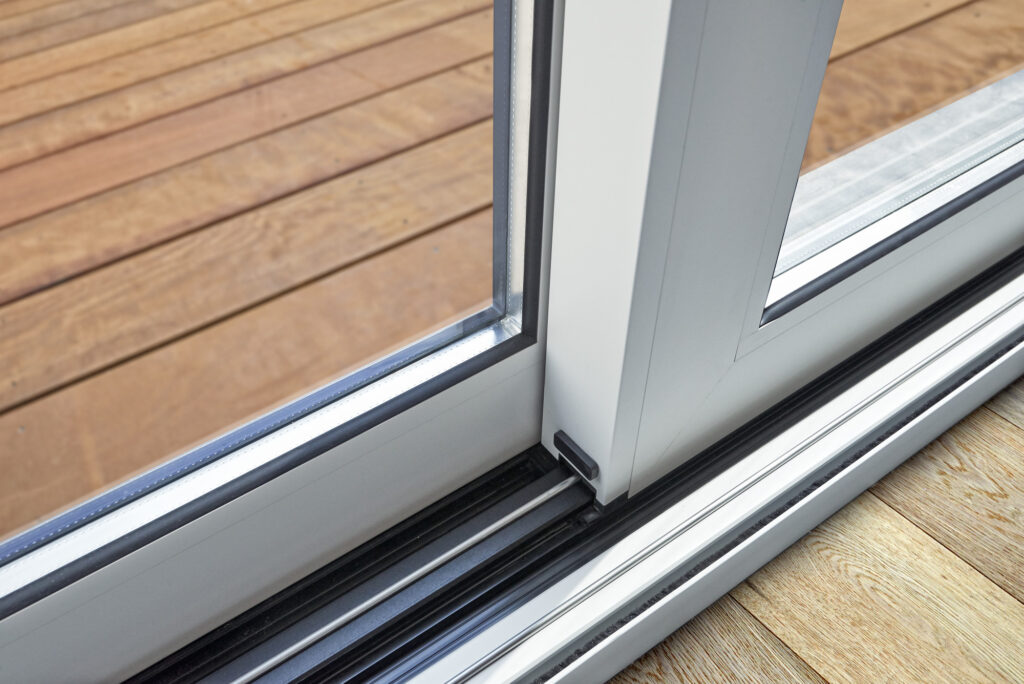
When it comes to patio screen doors, one of the most common sizes is the 36-inch standard screen door. This size is ideal for many homes and provides a comfortable entry and exit point to the outdoors.
One of the benefits of the 36-inch standard screen door is that it is widely available and easy to find. Many hardware stores and screen door retailers offer this size as a standard option, which means you can easily replace or install a new screen door without having to worry about custom measurements.
In addition to being widely available, the 36-inch standard screen door also offers a variety of design options. You can choose from different frame materials, such as wood, aluminum, or vinyl, to match your home’s aesthetic. You can also choose from a range of mesh screen options, including traditional, retractable, and solar-reflective screens, depending on your needs.
When it comes to installation, the 36-inch standard screen door is relatively easy to install. You’ll need a few basic tools, such as a roller tool and a screwdriver, and it’s important to follow the manufacturer’s instructions carefully. If you’re not comfortable with the installation process, you can always hire a professional to do it for you.
One thing to keep in mind when choosing a 36-inch standard screen door is that it’s important to measure your door frame accurately before making a purchase. You’ll want to measure the largest width and height of your door frame, as well as account for any obstructions that may affect the installation. Taking accurate measurements will ensure that your screen door fits properly and operates smoothly.
Overall, the 36-inch standard screen door is a popular and practical option for many homes. With a range of design options and easy installation, it’s a great choice for anyone looking to add a touch of style and functionality to their outdoor space.
Common Widths for Patio Screen Doors
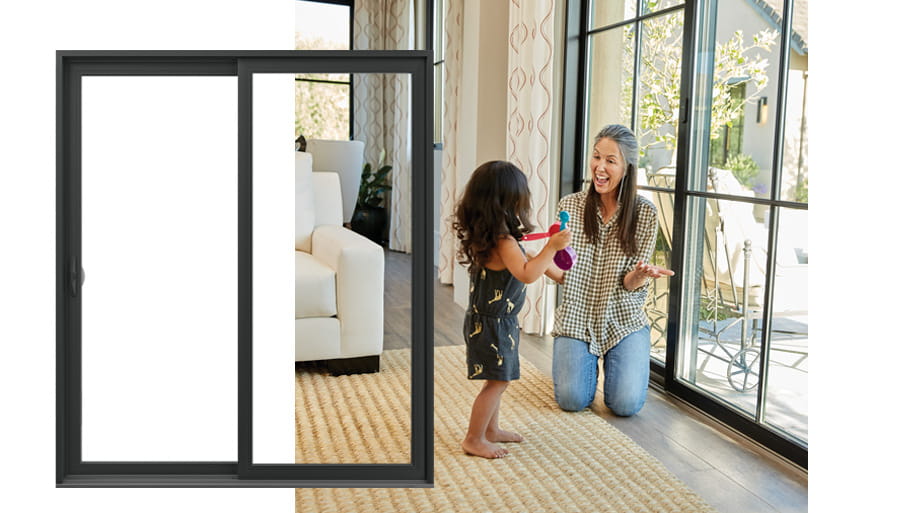
When it comes to patio screen doors, there are a few common widths that you’ll encounter. Knowing these standard widths can be helpful when you’re looking to replace or install a new screen door.
One of the most common widths for patio screen doors is 36 inches. This width is often used for standard single doors and is widely available at hardware stores and screen door retailers. Since it’s a standard size, you can easily find replacement screens or choose from a variety of design options, including frame material, mesh screen type, and frame color.
Another common width for patio screen doors is 48 inches. This is often used for double doors or oversized door frames. Like the 36-inch size, the 48-inch size is also widely available and comes in various design options. However, it’s important to note that not all retailers may carry this size, so it’s important to double-check before making a purchase.
If you need a patio screen door for a wider door frame, you may want to consider a custom size. Custom sizes are made-to-order and can accommodate a variety of door frame widths. This option may be pricier than a standard size, but it allows for more flexibility and ensures a proper fit.
It’s also important to consider the height of your patio screen door. Standard heights for screen doors are typically 80 inches or 96 inches. It’s important to measure the height of your door frame accurately to ensure your screen door fits properly and operates smoothly.
In conclusion, knowing the common widths for patio screen doors can make the replacement or installation process much easier. Standard sizes like 36 inches and 48 inches are widely available and come in various design options, while custom sizes offer more flexibility for wider door frames. Always remember to measure accurately to ensure a proper fit and smooth operation.
Common Heights for Patio Screen Doors
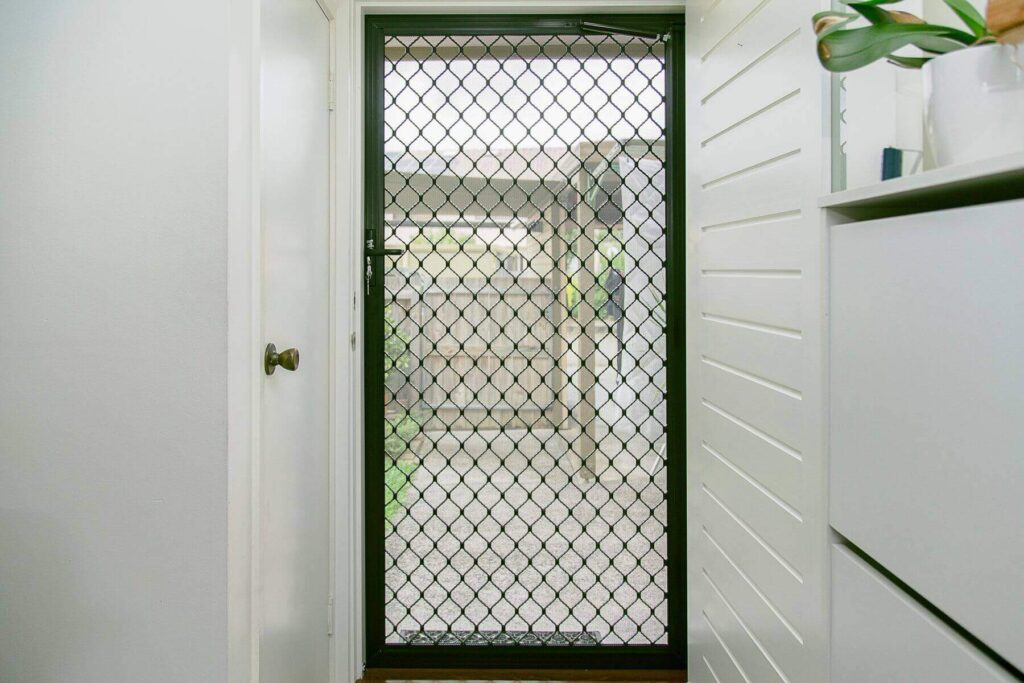
When it comes to selecting a patio screen door, there are many factors to consider. One of the most important factors to take into account is the height of the door. Though some may assume that all screen doors are the same size, the truth is that there are a range of common heights for patio screen doors.
The most common height for patio screen doors is 80 inches. This height is standard for most doors and is widely available at hardware stores and screen door retailers. Because it’s a standard height, finding replacement screens or choosing from a variety of design options is a breeze.
However, some homes may have taller door frames that require a larger screen door. In these cases, a height of 96 inches is typically the next most common size option. This option provides an additional 16 inches of height, making it a great fit for taller door frames.
It’s important to note that not all screen door retailers will carry both standard heights, so it’s wise to double-check before making a purchase. If you need a door of an alternative height, it may be necessary to consider a custom size screen door that’s made to your exact specifications.
When measuring for the height of a patio screen door, it’s critical to take accurate measurements to ensure a proper fit. A measuring tape and roller tool can be used to get the correct dimensions, ensuring the door will slide smoothly and seal securely. If you’re in doubt about how to measure, consult a professional custom door installer.
Lastly, it’s important to choose the right frame size, frame color, and mesh screen type to fit both the style and function of your outdoor space. Whether you prefer a wooden frame or extruded aluminum frame, a luminaire white retractable screen door or roll-formed screen doors, the choices are vast and varied for all types of doors. Taking the time to research and select the right door will ensure that your patio screen door is both attractive and practical for years to come.
Three-Panel Doors vs. French Doors
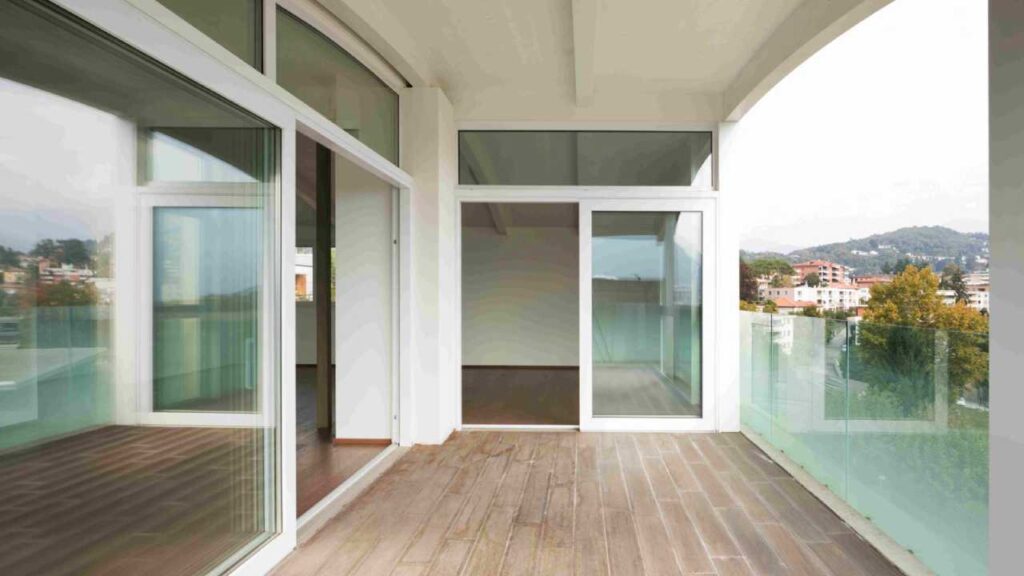
When it comes to choosing the right doors for your home, you have a wide range of options to consider. Two popular choices are three-panel doors and French doors. While both options offer their own unique advantages, the choice ultimately comes down to your personal preference and the specific needs of your space.
Three-panel doors are a modern option that’s gaining popularity for its sleek and contemporary look. They consist of three panels, with two side panels that are fixed in place and a center panel that slides open and closed. The sliding mechanism not only provides a seamless transition between your indoors and outdoors, but it also takes up less space than traditional swinging doors.
On the other hand, French doors are a classic and timeless option that can add elegance and charm to any room. These doors are made up of two panels that swing open and closed, hinged on the side of the frame. Because of their design, French doors allow for a wider opening and a more traditional look.
Both three-panel doors and French doors offer excellent natural light and ventilation, making them a great choice for enhancing the beauty and functionality of your home. One key difference between the two options is their operation: three-panel doors slide while French doors swing.
Another key point of consideration is the size of your door opening. Three-panel doors are a more practical option for larger openings because they can span wider without having to support a lot of weight. French doors, on the other hand, can fit comfortably in smaller openings and provide a more traditional look.
In terms of maintenance and durability, both options are relatively easy to maintain. Three-panel doors require only occasional cleaning and lubrication of the sliding mechanism, while French doors require regular cleaning and, depending on the material, may need to be weather-sealed from time to time.
When it comes to pricing, both three-panel doors and French doors can vary widely depending on materials, size, and installation options. Generally, three-panel doors tend to be a bit more affordable upfront, while French doors can be more expensive due to the additional hardware needed for installation.
In summary, the choice between three-panel doors and French doors is a matter of personal taste and specific needs. Consider factors such as size, style, operation, and budget when making your decision. With the right choice, you can create a beautiful and functional entryway to enhance your home’s overall aesthetic appeal.
Measuring and Fitting Your Patio Screen Door

Are you looking to replace your patio screen door but not sure where to start with the measurements? It may seem like a daunting task, but with the right tools and guidance, it can be a breeze.
First, you’ll need a measuring tape and a roller tool. It’s important to measure in three places: the height at the left, center, and right of the door opening, and the width at the top, middle, and bottom. Write down the largest measurements for both height and width, as this will ensure that the screen door fits properly and doesn’t leave any gaps where bugs or debris can enter.
Next, you’ll want to consider the frame size and color of your patio screen door. Some manufacturers may offer only standard sizes and colors, while others may allow you to customize the frame to match your outdoor space. In addition to the frame material, such as wooden or extruded aluminum frame, you’ll also want to consider the type of screen material and its level of durability and UV resistance.
Once you have the measurements and specifications figured out, it’s time to install the screen door. Make sure the frame is level and square before securing it in place with screws. Double-check that the door swings open and closed smoothly, and adjust the hinges if necessary.
If you’re unsure about the measuring or installation process, you can always consult a custom door installer for professional guidance. They can walk you through the entire process and even help you create a custom-sized sliding glass door that fits perfectly with your outdoor space.
With a properly fitted and installed patio screen door, you can enjoy the beauty and functionality of your outdoor space without having to worry about bugs, debris, or weather elements interfering with your relaxation time. So grab your measuring tape and roller tool, and start measuring for your new patio screen door today!
How to Measure Your Current Door Frame
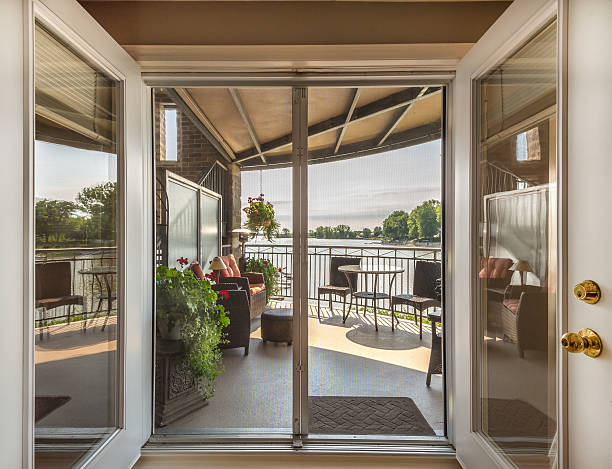
If you’re considering replacing your current door, it’s important to measure the existing door frame to ensure that you purchase the correct size replacement. Measuring your door frame may seem like a daunting task, but with a few simple steps, you can easily determine the size you need.
First, you’ll need a measuring tape. Start by measuring the width of the door frame in three places: the top, middle, and bottom. Write down each measurement, and take note of the smallest measurement. This will ensure that the replacement door fits properly without any gaps or unevenness.
Next, measure the height of the door frame in three places: the left, center, and right side. Just like with the width, write down each measurement and take note of the smallest measurement. This will ensure that the replacement door fits snugly in the frame and doesn’t leave any gaps.
It’s important to note that door frames can be uneven or warped over time, so it’s important to take multiple measurements to ensure accuracy. If the measurements differ slightly, go with the smallest measurement to ensure a proper fit.
Once you have the measurements, you can determine the standard size door you’ll need or begin looking at custom-sized options. It’s important to remember that door sizes can vary by manufacturer, so double-check the sizing before making a purchase.
In addition to measuring the width and height of the door frame, consider the depth of the frame as well. This is particularly important for storm doors or doors with glass panels, as you’ll want to make sure the replacement door has the proper clearance to fit securely.
Finally, take note of any door hardware, such as hinges or locks, and ensure that the replacement door has the appropriate cutouts or holes for these features.
Overall, measuring your current door frame may seem like a potentially tricky task, but with these simple steps, you can ensure a smooth and successful replacement process.
Tools Needed to Install and Fit a New Screen Door
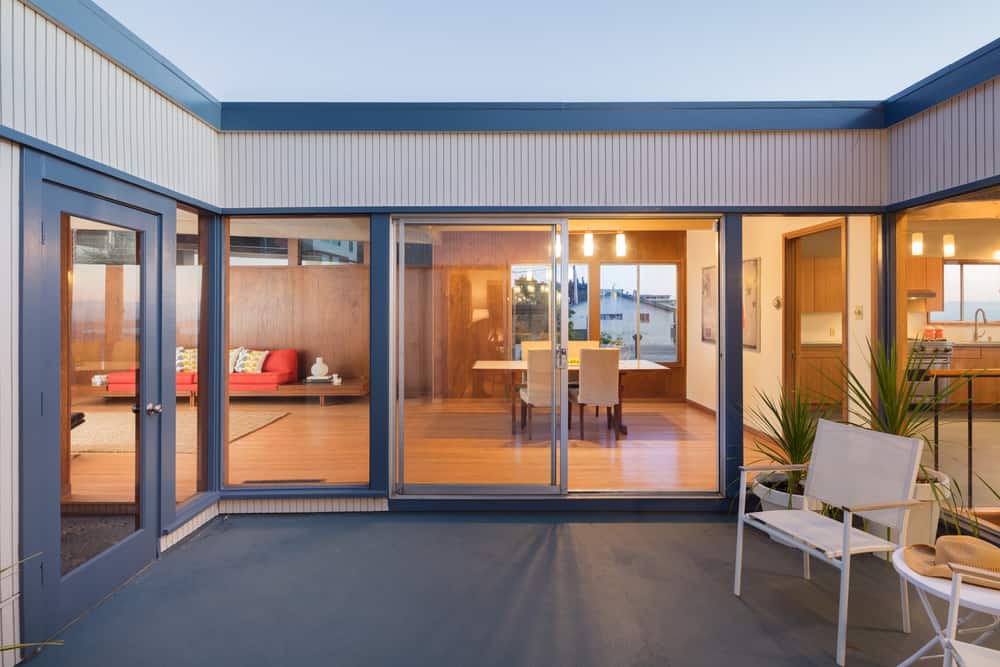
If you’re thinking of adding a patio screen door to your outdoor space, you might be wondering what tools you’ll need to install and fit it properly. Don’t worry – we’ve got you covered! Below are some of the essential tools that you’ll need to install and fit a new screen door:
1. Measuring Tape: Before starting any project, it’s important to take proper measurements to ensure a proper fit. Using a measuring tape, measure the height, width, and depth of your door frame. This will give you a good idea of what size screen door you need to purchase to fit into the frame.
2. Roller Tool: Once you have your new screen door, you’ll need a roller tool to fit the screen into its frame. This tool usually comes with the screen door kit or can be purchased separately.
3. Drill: To properly secure your screen door, you’ll need a drill to install screws and hinges. Use a drill bit that’s slightly smaller than the screws you’re using to prevent them from stripping when you’re screwing them in.
4. Screwdriver: You’ll need a screwdriver to screw in the screws for hinges, locks, and other door hardware. Make sure to use the appropriate screwdriver for the type of screws you have.
5. Level: A level is key to ensuring that your screen door is installed straight and even. Make sure to use it throughout the installation process to avoid any crooked lines.
6. Sawhorses: Sawhorses are helpful to have when you’re installing a screen door by yourself. They’ll hold the door in place while you make the necessary measurements and adjustments.
7. Utility Knife: A utility knife will come in handy while you’re cutting and trimming off excess mesh from your screen door.
8. Safety Equipment: Finally, protect yourself while you’re handling tools and sharp materials by wearing safety glasses and work gloves.
In conclusion, with the right tools and a little bit of patience, installing and fitting a new screen door is a manageable DIY project. Follow the steps properly, take accurate measurements, and use high-quality equipment to ensure a proper fit and a long-lasting, functional screen door.
Determine the Right Size of Replacement Screen Door
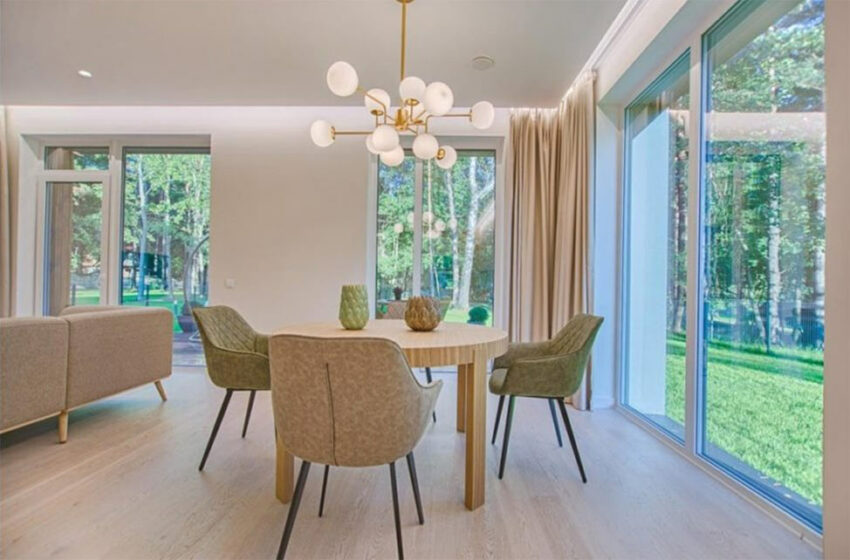
When it comes to patio screen doors, there are a variety of sizes available to fit a range of door frames. But how do you determine the right size for your replacement screen door?
The first step is to measure your door frame. Using a measuring tape, measure the height and width of your door frame, making note of the largest measurements. This will give you a good idea of the size screen door you need to purchase.
It’s important to measure the depth of your door frame as well, as some screen doors may have a deeper or shallower frame than your current door. Make sure to purchase a screen door with a frame depth that matches your door frame.
If you’re unsure about the exact size of your door frame or the size of screen door you need to purchase, consider consulting with a custom door installer for assistance.
Another option is to purchase a custom-sized sliding glass door or French patio door. These doors can be ordered to fit your specific door frame dimensions and come with the added benefit of having glass panels for more natural light and outdoor views.
When it comes to frame size, there are a few common sizes available. Most patio screen doors come in standard heights of 80 inches and 96 inches, and standard widths of 30 inches, 32 inches, 36 inches, and 48 inches. However, there are also custom size options available for those with non-standard door frame dimensions.
It’s also important to consider the type of screen door you want. Roll-formed screen doors are a popular option with a lightweight aluminum frame and mesh screen. Retractable screen doors, on the other hand, allow for unobstructed views when not in use and have a sleeker profile when installed.
When purchasing a screen door, don’t forget to consider frame color and design options to match your outdoor space and home aesthetic.
Overall, determining the right size of replacement screen door for your patio requires proper measurements and consideration of frame size, type of door, and design options. With these factors in mind, upgrading your patio screen door can enhance your outdoor space and improve the functionality of your home.
Fitting the New Door in the Frame
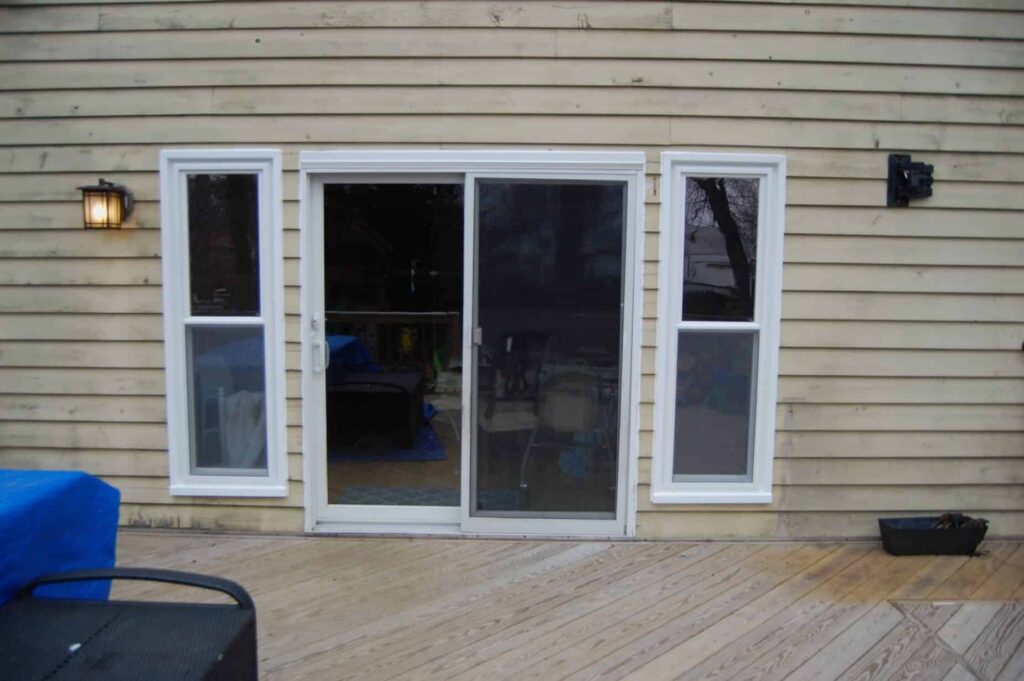
Now that you have purchased your new patio screen door, it’s time to install it into your door frame. Here’s a step-by-step guide on how to fit the new door in the frame.
1. Remove the old screen door: If you have an existing screen door, start by removing it from the door frame. Lift the door up and out of the frame, taking care not to damage the frame or screen.
2. Clean the frame: Before installing the new door, take the time to clean the door frame. Remove any dirt, debris, or old caulking that may interfere with a proper fit.
3. Measure the door: Place the new door in the frame to ensure it fits correctly. Take measurements of the frame opening and compare them to the measurements of the new door. If the new door is too large, it may need to be cut down to size using a saw or other cutting tool.
4. Attach the wheels: Most patio screen doors come with wheels attached to the bottom of the frame. Attach the wheels to the door according to the manufacturer’s instructions.
5. Fit the door into the frame: Lift the new door and place it into the frame, ensuring that the bottom wheels are properly aligned and able to move freely along the track. The door should fit snugly into the frame, without any gaps or spaces.
6. Secure the door: Once the door is in place, secure it to the frame using screws or other fasteners provided by the manufacturer. Tighten all screws until the door is secure and able to move smoothly along the track.
7. Adjust the door: If necessary, adjust the wheels on the bottom of the door to ensure that it operates smoothly and without any resistance. The door should glide easily along the track and close snugly against the frame.
8. Test the door: Finally, test the door to ensure that it opens and closes smoothly and without any gaps or resistance. Make any necessary adjustments to the wheels or frame to ensure a proper fit.
By following these steps, you can easily fit your new patio screen door into your existing door frame. With a little bit of time and effort, you can enjoy the benefits of a new, stylish, and functional screen door in your home.
Adjustments to Make When Installing a Custom-Sized Door
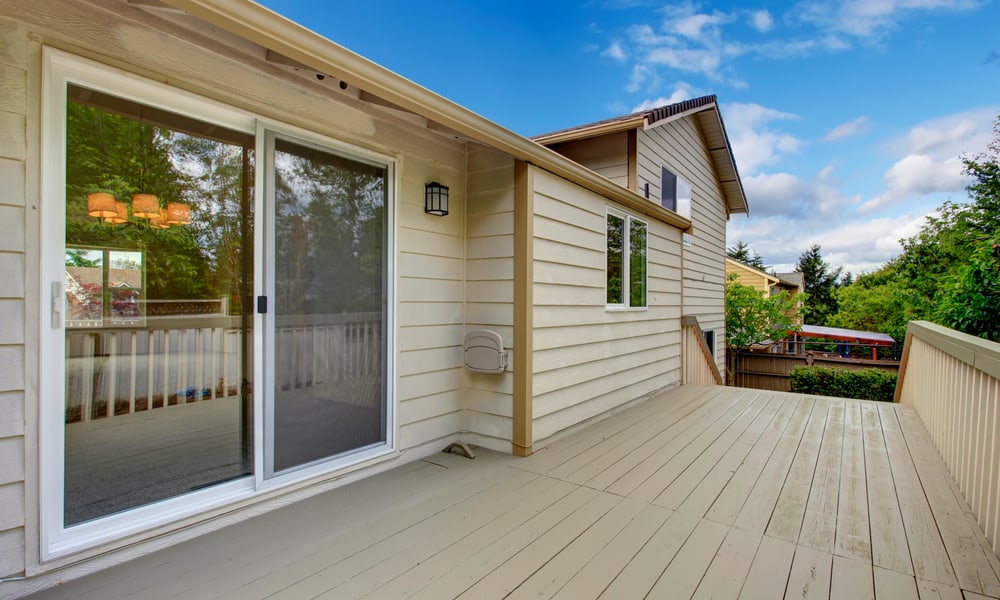
When installing a custom-sized door, it’s important to take extra care to ensure a proper fit. Unlike standard-sized doors that are designed to fit in most door frames, custom-sized doors require precise measurements and adjustments to get the perfect fit. Here are some adjustments to make when installing a custom-sized door:
1. Frame Size: Ensure that the door frame matches the size of the custom door. This adjustment can be made by measuring both the height and width of the door frame, and comparing it to the size of the custom door.
2. Height Measurement: Measure the height of the custom door from the floor to the top of the door. This measurement ensures that the door is not too short or too long for the frame.
3. Largest Measurement: Measure the largest width of the door, including the door handle and any other hardware. This adjustment ensures that the door does not touch the frame or the hardware when opening or closing.
4. Proper Measurements: Use a measuring tape and a roller tool to ensure a precise measurement of the door. When measuring the door, take care to measure from the inside of the door frame to the inside of the opposite frame, ensuring that the measurement is accurate.
5. Adjust the Frame: If the door is too large or too small, the frame may need to be adjusted accordingly. This adjustment can be made by removing any excess material from the frame or adding additional material to fill in gaps.
6. Custom Door Installer: Consider using a custom door installer to ensure that the door is installed correctly. A custom door installer has expertise and experience in installing custom-sized doors and can make the necessary adjustments for a perfect fit.
In conclusion, custom-sized doors require extra attention to ensure a perfect fit. Taking accurate measurements, making proper adjustments, and hiring a custom door installer can ensure that the door is installed correctly and will last for years to come. By following these steps, homeowners can enjoy the benefits of a custom-sized door that fits perfectly in their unique space.
Types of Patio Screen Doors Available on the Market
When it comes to patio screen doors, there are various types available on the market. Each type has its own unique features and benefits, making the decision on which one to choose a bit daunting. However, understanding the different types can help you make an informed decision based on your needs and preferences.
1. Sliding Patio Screen Doors: These types of screen doors are one of the most common and popular options. They slide on a track and are made to fit standard sizes. These types of doors are great for spaces where there may not be enough clearance for a swinging door.
2. French Patio Screen Doors: These doors function like double doors and can be customized to fit your specific space requirements. One of the doors is the active door, meaning it can be opened and closed, while the other is fixed in place. French patio screen doors are a great option for those who want to add an elegant touch to their outdoor living space.
3. Retractable Screen Doors: Retractable screen doors are a relatively new option in the market. They are designed to retract into a housing unit when not in use, providing an uninterrupted view and maximum ventilation. Retractable screen doors are perfect for those who want to keep the bugs out while still enjoying the fresh air.
4. Roll-Formed Screen Doors: These types of screen doors are made by bending sheet metal into a desired shape. They are great for those who prioritize durability and security in their screen doors. They are also highly customizable in terms of design and color.
5. Luminaire White Retractable Screen Door: The Luminaire White Retractable Screen Door is a unique option on the market. It is designed to offer an uninterrupted view and natural ventilation, while also providing protection from insects. Its sleek design makes it a popular choice among homeowners who don’t want to compromise on style.
In summary, there are several types of patio screen doors available on the market. Sliding patio screen doors, French patio screen doors, retractable screen doors, roll-formed screen doors, and Luminaire White Retractable Screen Doors all offer unique features and benefits for homeowners with different preferences and needs. Understanding the different types of patio screen doors can help you make an informed decision that will enhance the functionality and appearance of your outdoor living space.
Glass Panel or Retractable Options for Patio Screens
When it comes to patio screen doors, there are a variety of options to choose from that can enhance the functionality and aesthetics of your outdoor space. Two popular options are glass panel and retractable doors.
Glass panel doors consist of large panes of glass that slide open and closed on a track. They are a great option for homeowners who value natural light and unobstructed views of their outdoor surroundings. Glass panel doors can also enhance the look of your patio and add a touch of elegance to your home.
Retractable screen doors, on the other hand, are a practical solution for those who want to enjoy the fresh air without sacrificing their view. These innovative doors retract into a housing unit when not in use, providing an uninterrupted view and maximum ventilation. Additionally, retractable doors can be customized to fit a variety of patio sizes and come in a range of colors and designs to match your home’s decor.
One of the benefits of choosing glass panel or retractable options is their ability to increase the value of your home. They are popular among homebuyers and can enhance your home’s curb appeal. Additionally, these doors can add an extra layer of security to your home, as they provide an additional barrier against intruders.
When considering glass panel or retractable options, it’s important to keep in mind the size of your patio, as well as any potential installation challenges. It may be necessary to hire a professional to ensure proper installation and proper function of the doors.
In conclusion, glass panel and retractable screen doors are popular options for those looking to enhance the functionality and aesthetics of their outdoor space. By choosing one of these options, homeowners can enjoy natural light, unobstructed views, fresh air, and added security, while also increasing the value of their home.

